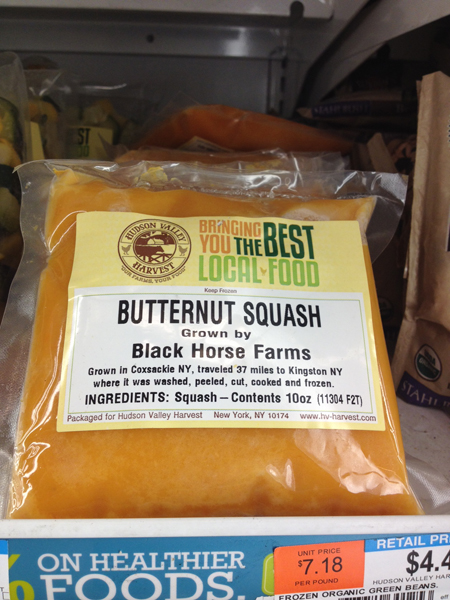 Midway through Eat-Drink-Local week, our annual 8-day festival for our foodshed, we took a moment to get the scoop on how Whole Foods Market sources many of its products from small and local producers. Check out our interview below with Whole Foods Market forager Elly Truesdell.
Midway through Eat-Drink-Local week, our annual 8-day festival for our foodshed, we took a moment to get the scoop on how Whole Foods Market sources many of its products from small and local producers. Check out our interview below with Whole Foods Market forager Elly Truesdell.
Q: Your title is “Local forager.” Tell us what that means.
A: On the Whole Foods Market map, the “Northeast Region” encompasses all of New York State, Southern Connecticut and Northern New Jersey, which is where I serve as Local Forager. In collaboration with our regional buyers, I source products within the tri-state area, drawing from farming communities like the Hudson Valley, the North Fork of Long Island, Litchfield County, CT and Morris County, NJ, where delicious, sustainably-grown foods abound. Simultaneously, the level and innovation of food production in Queens, Brooklyn and Manhattan has risen to such an incredible place that the potential for value-added items is nearly endless.
Q: How does a company as big as Whole Foods Market buy from such small farmers and artisans?
A: I get that question a lot. A similar question from growers, bakers and artisanal producers is “how much do I need to produce in order to sell to you guys?” People always seem to assume that size is the ultimate qualification when we’re talking buying potential. Happily, that’s not the case.
Volume and capacity are not determining factors for a supplier’s success or even for consideration. In fact, the three most important attributes are: partnership, commitment and nimbleness. Whole Foods Market is a regionalized company. You’ll never walk into a store in Denver and find the same product mix as in Seattle, or Chicago, or New York. We work with thousands of small local companies nationwide.
Given the proliferation of great products, it’s important that we identify how and what sort of company or grower makes a great partner in our stores. We work with a phenomenal network of food innovators, farmers, and entrepreneurs who showcase a superior level of commitment to quality.
Q: Can you give me an example of what you call a great partner?
A: Sure: Hudson Valley Harvest is a partnership that I’m extremely proud of and have been thrilled by its development throughout our stores. Hudson Valley Harvest blast chills [freezes] a line of nearly a dozen vegetables in the Farm-to-Table Co-Packers plant in Kingston with unique offerings like heirloom tomato and butternut squash purees, plus a blanched-kale smoothie base that comes blender-ready.
Paul Alward, one of their co-founding partners, found his way to me just after Hurricane Irene in 2011, having taken a major risk: buying crops from distressed farmers and freezing them. By working together, we were able to get those products into out stores, proving new local options to customers and, in turn, vital income for farmers. Paul and his team work tirelessly because they understand the importance of supplier reliability in the retail world.
As is the case with so many of our vendors, Hudson Valley Harvest started in just one store in downtown Manhattan, and in just one year have steadily grown to now being offered in eight of our locations throughout the tri-state area.
This summer, we’ve developed a fresh program with Paul and his cooperative of farms so that our produce teams in ten stores can order the week’s available haul: vegetable varieties in the dozens and specialty crops otherwise difficult to source. Their move from frozen to fresh is an exciting expansion and offers a major business opportunity to a community of farmers who might not otherwise reach this audience. Soon, as Hudson Valley Harvest is ready, we’ll distribute the frozen line to all 26 stores and begin introducing their newer line of jarred honeys, maple syrups and sauces.
Whole Foods Market defies conventional retail standards, allowing unique distribution models and working very closely with our supplier partners, no matter how large or small. These sorts of success stories hinge on reciprocity and the result is mutually beneficial: farmers grow more, the regional food economy thrives, and, our customers happily support these artisans by munching on the best local foods available.



